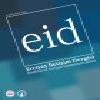TÜRKİYE’DE 2017 ANAYASA REFERANDUMU SÜRECİNDE SİYASAL İLETİŞİM ARACI OLARAK TWİTTER KULLANIMI
Twitter, Siyasal İletişim, Siyasal Kampanyalar, Demokrasi, 16 Nisan 2017 Anayasa Referandumu, Türkiye
THE USE OF TWITTER AS THE MEANS OF POLITICAL COMMUNICATION IN THE PROCESS OF CONSTITUTIONAL REFERENDUM 2017 IN TURKEY
Twitter, Political Communication, Political Campaigns, Democracy, 16 April 2017 Constitutional Referendum, Turkey,
___
- Akparti.org (2017). Referandum Kitapçığı, Erişim: 26 Haziran 2017, http://www.akparti.org.tr/ kararimizevet/
- Anstead, N. ve Chadwick, A. (2009). Parties, Election Campaigning, and the Internet: Toward a Comparative Institutional Approach. A. Chadwick ve P. N. Howard (Ed.). Routledge Handbook of Internet Politics (56-71). ABD: Routledge.
- Anthony, S.M. ve Zhang, W. (2017). Alternative Tweeting: A Comparison of Frames in Twitter’s Political Discourse and Mainstream Newspaper Coverage of the Singapore General Election of 2011. M. Adria ve Y. Mao (Ed.). Handbook of Research on Citizen Engagement and Public Participation in the Era of New Media, (324-343), ABD: IGI Global.
- Assange, J., Appelbaum, J., Müller-Maguhn, A. ve Zimmermann, J. (2012). Şifrepunk. (Ayşe D. Temiz, Çev.). İstanbul: Metis.
- Ausserhofer, J., Maireder, A. (2013). National Politics on Twitter. Information, Communication & Society, 16(3), 291-314.
- Bayraktutan-Sütçü, G., Binark, M.,, Çomu, T., Doğu, B. İslamoğlu, G. (2014). Siyasal İletişim Sürecinde Sosyal Medya ve Türkiye’de 2011 Genel Seçimlerinde Twitter Kullanımı, Bilig 68, 59-96.
- Boyd, D. M., Golder, S. ve Lotan, G. (2010). Tweet, tweet, retweet: Conversational aspects of retweeting on Twitter. 43rd Hawaii International Conference on System Science. Erişim: 05 Nisan 2017, http://www.danah.org/papers/TweetTweetRetweet.pdf
- Bruns, A. ve Burgess, J. E. (2011). ‘#Ausvotes: how Twitter covered the 2010 Australian Federal Election. Communication, Politics and Culture, 44 (2), 37–56.
- Campbell, D. F. J., Pölzlbauer, P., Barth, T. D. Pölzlbauer, G. (2015). Erişim: 11 Nisan 2017. Democracy_Ranking.http://democracyranking.org/ranking/2015/data/Scores_of_the_ Democracy_Ranking_2015_A4.pdf.
- Chp.org (2017). Anayasa Değişikliği Kitapçığı, Erişim: 26 Haziran 2017, https://www.chp.org.tr/ Public/0/Other/hayirdemezseniz.pdf
- D’heer, E. ve Verdegem, P. (2014). An Intermedia Understanding of the Networked Twitter Ecology. B. Pătrut ve M Pătruţ (Ed.). Social Media in Politics: Case Studies on the Political Power of Social Media (81-96). Switzerland: Springer.
- Dahl, R. (2015). Demokrasi Üzerine. (B. Kadıoğlu, Çev.). Ankara: Phoenix Yayınevi
- Dankwart A. R., (1970). Transitions to Democracy. Toward a Dynamic Model, Comparative Politics, 2(3), 337-363.
- Davis, R., Baumgartner, J. C., Francia, P. L., ve Morris, J. S. (2009). The Internet in U.S. Election Campaigns. A. Chadwick ve P. N. Howard (Ed.). Routledge Handbook of Internet Politics (13-23). ABD: Routledge.
- Demirhan, K. (2015). Sosyal Medya ve Siyaset İlişkisinin Müzakereci ve Agonistik Demokrasi Yaklaşımları Çerçevesinde Analizi: Türkiye’de 2014 Cumhurbaşkanlığı Seçimi Sürecinde Twitter Kullanımı. Yayınlanmamış Doktora Tezi, Hacettepe Üniversitesi Sosyal Bilimler Enstitüsü, Ankara.
- Doğu, B., Özçetin, B. Bayraktutan, G., Binark, M., Çomu, T., Aydemir, A. T. ve İslamoğlu, G. (2014). Siyasetin Yeni Hali: Vaka-i Sosyal Medya. İstanbul: Kalkedon.
- Enli, G. S. & Skogerbø, E. (2013). Personalized Campaigns in Party-Centred Politics. Information, Communication & Society, 16(5), 757-774. doi: 10.1080/1369118X.2013.782330
- Francoli, M. (2016). Exploring the Concept of the “Social Media Campaign. M. Khosrow- Pour (Ed.). Social Media and Networking: Concepts, Methodologies, Tools, and Applications,(106-117). ABD: IGI Global. doi: 10.4018/978-1-4666-8614-4.ch007
- Graham, T. B., M. Hazelhoff, K. ve Haar, G. (2013). Between Broadcasting Political Messages and Interacting With Voters. Information, Communication & Society, 16(5), 692-716. Doi: 10.1080/1369118X.2013.785581
- Haberturk (2017). 16 Nisan Referandumu, Erişim: 26 Haziran 2017, http://www.haberturk.com/ gundem/haber/1427214-adan-zye-16-nisan-referandumu-madde-madde-yeni-anayasa
- Internetworldstats (2017). İnternet İstatistikleri 2017, Erişim: 11 Nisan 2017 http://www. internetworldstats. com/stats.htm
- Kaun, A. ve Guyard, C. (2012). The Obama Effect: The Perception of Campaigning 2.0 in Swedish
- National Election 2010. A. Manoharan ve M. Holzer (Ed.). E-Governance and Civic Engagement: Factors and Determinants of E-Democracy (524-542), ABD: IGI Global.
- Mhp.org (2017). Anayasa Değişikliği Kitapçığı, Erişim: 26 Haziran 2017, http://mhp.org.tr/ usr_img/_mhp2007/kitaplar/kitapcik_mhp_ve_anayasa_degisikligi.pdf
- Murthy, D. (2013). Twitter: Social Communication in the Twitter Age. İngiltere: Polity.
- Ntv (2017). HDP Referandum Kampanyası, Erişim: 26 Haziran 2017, http://www.ntv.com.tr/ turkiye/hdp-referandum-kampanyasini-tanitti,_Wfy_IX0gUS Cno6iugGF8g
- Sandoval-Almazan, R. (2017). Political Messaging in Digital Spaces: The Case of Twitter in Mexico’s Presidential Campaign. Y. Ibrahim (Ed.). Politics, Protest, and Empowerment in Digital Spaces, (72-90). ABD: IGI Global.
- Sarıtaş, A. ve Aydın, E. E. (2015). Elections and Social Media: An Overview. International Journal of Social Ecology and Sustainable Development, 6(1), 59-72.
- Transparency.twitter (2016). İçerik Kaldırma Talepleri Erişim: 11 Nisan 2017 https://transparency. twitter.com/en/removal-requests.html#removal-requests-jul-dec-2014
- Twitter (2017). Tweet. Erişim: 05 Nisan 2017, https://support.twitter.com/articles/20169579
- ISSN: 1308-3198
- Yayın Aralığı: 2
- Başlangıç: 2009
- Yayıncı: Erciyes Üniversitesi İletişim Fakültesi
STAR WARS: GÜÇ UYANIYOR (2015) FİLMİNİN GÖSTERGEBİLİMSEL ÇÖZÜMLEMESİ
HAK HABERCİLİĞİ PERSPEKTİFİNDEN ÇEVRİMİÇİ HABERLERDE MÜLTECİ SESLERİNİN DEĞERLENDİRİLMESİ
MİTİNGLER VE SEÇMENLER ÜZERİNDEKİ ETKİSİ: 30 MART 2014 YEREL SEÇİMLERİ ELAZIĞ SEÇMENİ ÖRNEĞİ
GASTRONOMİ TURİZMİ İŞLETMELERİNİN WEB SİTELERİ ÜZERİNE KARŞILAŞTIRMALI BİR DEĞERLENDİRME
KISA FİLM YAPIMINDA ANLAM YARATMA ARACI OLARAK SES
VATANIM SENSİN DİZİSİ VE HAFIZALARDA CANLANAN BAYRAK OLAYI
YURTTAŞ GAZETECİLİĞİNİN ANA AKIM MEDYAYA ETKİSİ: WHATSAPP İHBAR HATLARI ÖRNEĞİ
TOPLUMSAL İLETİŞİM KURUMU OLARAK KAHVEHANELERE DAİR BİR ARAŞTIRMA: GAZİANTEP ÖRNEĞİ
İLİŞKİSEL MEMNUNİYETİN KRİZ İLETİŞİM STRATEJİLERİ ÜZERİNE ETKİSİ
